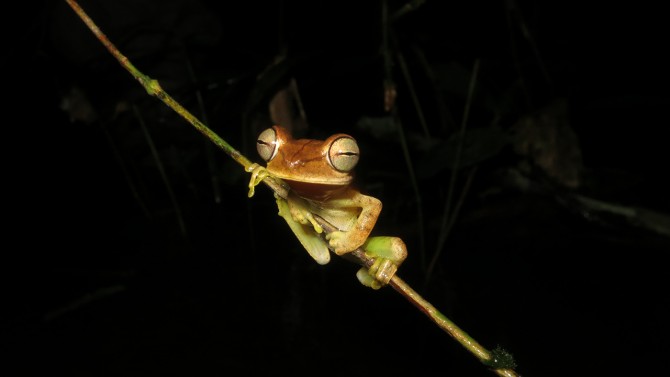Study: Fungal disease decimates amphibians worldwide
By Krishna Ramanujan
A fungal disease that afflicts amphibians has led to the greatest loss of biodiversity ever recorded due to a disease, according to a paper published March 29 in Science.
The fungus – which degrades the skin of amphibians – has caused the worldwide decline of at least 501 species of frogs, toads and salamanders, including 90 extinctions.
Human trade and development have helped spread chytridiomycosis to more than 60 countries, with the biggest amphibian declines occurring in Australia, Central America and South America.
The study provides an example of declining global biodiversity and rising extinctions in the face of accelerating climate change, habitat change and disease.
“The [chytridiomycosis panzootic] really happened fast and had significant impact in terms of the total number of species affected and it has had a lasting impact,” said Kelly Zamudio, the Goldwin Smith Professor of Ecology and Evolutionary Biology at Cornell, an expert on frogs of the Americas and the frog-killing chytrid fungus, and a co-author of the paper.
Zamudio added that ecological changes of our time, such as drastic temperature shifts brought on by climate change, or habitat loss that leads to populations becoming fragmented and losing genetic diversity, contribute to making species vulnerable to diseases.
“We can project that there are going to be families in the frog tree of life that are going to be more vulnerable to the next big emergent disease,” Zamudio said. “The study also gives us some action points for us to ask, what shall we change?”
Though there is no treatment for chytridiomycosis, the international team of amphibian experts – led by first author Ben Scheele, an ecologist at the Australian National University – advocate for better biosecurity and reductions in wildlife trade to limit its spread.
“It’s a generalist pathogen,” Zamudio said. “Most pathogens tend to affect one species or one family or group, but this infects all frogs. There are more than 7,000 frog species described in the world, and as far as we know a huge percentage of them are susceptible.”
The infection is primarily caused by Batrachochytrium dendrobatidis (Bd), a fungus discovered in 1998 that originated in Asia, according to genetic analysis. Decades prior to its discovery, the disease peaked globally in the 1980s, with a smaller peak in the early 2000s. Minimal losses from chytridiomycosis were reported in Asia, Africa, Europe and North America. A related pathogen – B. salamandrivorans, discovered in 2013 – has infected salamanders and newts of Europe and threatens diverse Salamander species if it were to arrive in North America.
While 192 species that have declined due to Bd continue to lose numbers, about 60 species have shown modest signs of recovery. However, those recoveries have occurred in isolated populations, rather than on a species level.
“Part of our work is to understand what kind of genetic variation exists out there that could lead to resistance,” Zamudio said. “We can now go to those 60 species and ask whether it’s the same mechanism that leads [to recovery]. When we show signatures of resistance, that’s a real step forward.”
Adding to the surveys of experts from 36 institutions, Zamudio contributed information on the status of frogs that she studies; frogs of the United States and Latin America, with an emphasis on Panama and Brazil.
Other Cornell co-authors include Ana Longo, Ph.D. ’15, a postdoctoral researcher at the University of Maryland, and Cait McDonald, a combined DVM/Ph.D. student in Zamudio’s lab.
Media Contact
Get Cornell news delivered right to your inbox.
Subscribe

